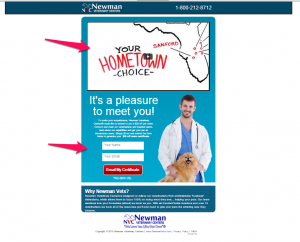— April 28, 2018

“In 2008, all of the financial measures for our business were negative. We knew we had to significantly cut expenses and do it quickly.
“The largest expense for our firm is compensation and benefits — people costs.
“We set an objective to cut 10 percent out of total operating expenses in 90 days. We also agreed that we would do so without layoffs or letting anyone go. So taking 10 percent out of your total expenses, while not touching half of your expenses, means cutting 20 percent out of everything else.
We went out to our associates and said we were freezing headcount and salaries, but assured them their jobs were safe as long as they continued to perform. We also asked our associates for their cost-cutting ideas. The ideas came pouring in and we ended up reducing expenses by more than our objective. Doing so also demonstrated our respect and appreciation for all our associates. Partnership creates a feeling that we are all in this together.”
We are in this together. That is leadership. I was on the edge of my seat listening to Jim Weddle, managing partner for Edward Jones, this week at the 2018 Edward Jones Managing Partners Conference. I was on-site to deliver the opening keynote and simultaneously getting a lesson on leadership. It didn’t stop there.
“We worked with Jim Collins, the author of the books ‘Good to Great’ and ‘Built to Last.’
“He urged us to think about our business strategically, by thinking through the answers to three questions, what he calls his Hedgehog concept.
- What are you most passionate about?
- What can you do to be the best in the world?
- What drives your economic engine?
“We are most passionate about helping clients to achieve their financial goals.
“We believe we are the best at building deep relationships to better serve our clients. And our economic engine is powered by an increasing number of successful branch teams serving clients.
“The intersection of those three things is your vision. At Edward Jones, ours is to be the first choice of serious, long-term individual investors.”
No surprise Edward Jones has been recognized 19 times as a “Fortune 100 Best Place To Work” landing at #5 in 2018, top among all financial services firms. When you listen to Jim you also understand it’s work that matters.
I could’ve listened to Jim all morning. Edward Jones is in the people business. Period. They know relationships precede financial results. This isn’t lip service or wishful thinking. It’s a source of competitive advantage. In a category where client expectations are evolving, massive wealth is set to transfer and technology is going to disrupt the way people invest, client experience is the differentiator. That starts inside the firm.
It’s a stark contrast to the short-term approach to leadership and financial performance that is unfortunately so prevalent today. I’ve seen the toll it takes firsthand, and it’s precisely why I walked away in 2009 when the firm I worked for was planning to follow the “headcount to revenue formula” and shed another 30 percent of our workforce. I didn’t want to be a part of that brutal, short-sighted decision that was going to harm both people and the long-term performance capability of the business.
In his new book, “Dying for a Paycheck,” Jeffrey Pfeffer, the Thomas D. Dee II Professor of Organizational Behavior at the Stanford Graduate School of Business, steps up the attack on management practices and American workplaces and that are destroying individual and organizational health.
He identified 10 workplace exposures within the control of employers that significantly affect human health and longevity. And we’re not talking about the industrial accidents that plagued the American workforce a century ago. Rather, the exposures in the 21st century include being laid off; not having health insurance; irregular work shifts; working more than 40 hours weekly; confronting job insecurity; facing work-life conflicts; having low control over one’s job and job environment; facing high job demands; having low levels of social support at work; and working in unfair situations.
While layoffs are widely considered an unavoidable response to economic downturn, Pfeffer concluded that they lead to increased mortality and poor health. But he also finds that the voluminous studies of the effects of layoffs on corporate performance “tell a largely, although not completely consistent, story — there is little evidence that layoffs provide benefits and much evidence that layoffs can harm the companies doing them.”
In short, layoffs are a losing strategy. Who wins long term inside a toxic workplace with management practices designed to do nothing more than “maximize shareholder value”?
We can do better.
Leadership isn’t a job. It’s a responsibility. It isn’t about us. It’s about humility, sacrifice, service and helping other people. Put people first. Performance and profitability follow. Isn’t that a better legacy to leave than “maximizing shareholder value”?
It always will be for me.
Thank you Jim and Edward Jones for the reminder.
Business & Finance Articles on Business 2 Community
(62)









